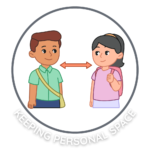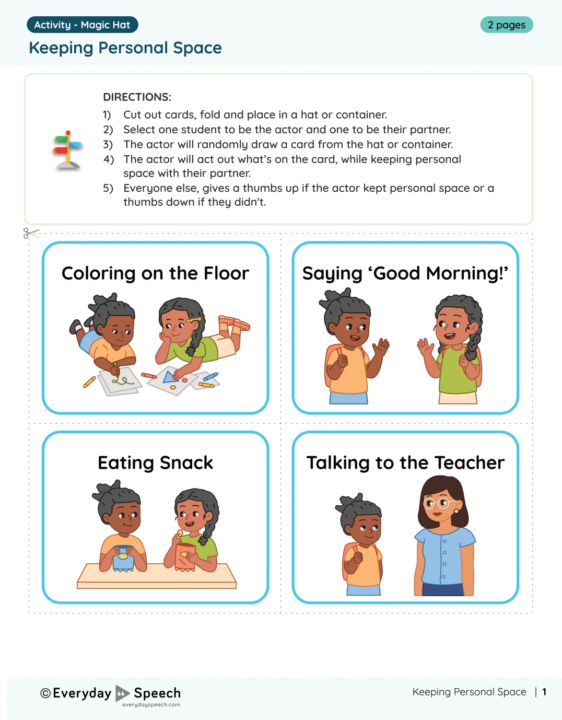
Key Takeaways
- Personal space is crucial for social development and communication skills.
- Teaching preschoolers about personal space aids in understanding boundaries and promoting positive social interactions.
- Lesson plan objective: Students will understand personal space and how to respect it.
In this blog post, we will provide you with an easy-to-follow free keeping personal space lesson plan designed to help teach your students some social boundaries. Let’s dive right into the world of bubbles, hula hoops, and elbow space!
Introduction
Understanding and respecting personal space can significantly contribute to social development and communication skills. For preschool children, mastering the concept of personal space can be a little tricky, as it requires abstract thinking and emotional intelligence. This blog post will provide special education teachers and specialists with a comprehensive lesson plan and easy, no-prep activities to introduce and practice the concept of personal space with preschool students. Let’s dive in!
What is Personal Space?
Personal space is an invisible bubble that surrounds each individual, serving as a comfort zone. When this space is violated, it can cause discomfort, stress, and anxiety. In the context of a classroom, teaching about personal space is crucial in cultivating respectful and comfortable interactions among students.
Why Teach Preschoolers Personal Space?
Teaching preschoolers about personal space aids in understanding boundaries, promoting positive social interactions, and enhancing emotional intelligence. For children, it’s not just about teaching them to respect others’ personal space, but also about advocating for their own. It’s a crucial step in their journey toward self-advocacy and independence.
Lesson Plan: Teaching Personal Space to Preschoolers
Here’s a simple lesson plan to guide you through teaching the concept of personal space:
Objective: Students will understand the concept of personal space and how to respect it in various social settings.
Materials:
- Picture books about personal space
- Colored hula hoops or masking tape
- Everyday Speech Personal Space Worksheet
Procedure:
- Introduction through Storytelling: Start the lesson by reading a picture book about personal space. This helps to introduce the concept in a kid-friendly manner. Some recommendations include “Personal Space Camp” by Julia Cook or “You Will Be Okay” by Meg Fleming.
- Discussion: After the story, initiate a class discussion about personal space. Ask students how they would feel if someone entered their personal space without permission.
- Demonstration: Using a hula hoop or masking tape, visually demonstrate the concept of personal space. You can have a student stand in the middle of the hula hoop or a taped circle to show the space that should be given to each person.
- Practice: Organize a role-play activity where students get to practice giving personal space to their peers in different scenarios. Use prompts like standing in a line, playing together, or sitting next to a friend.
- Review with our printable worksheet: Cut out each practice card and have student role-play showing personal space in each different scenario.

Even More No-Prep Activities to Reinforce Personal Space
- Bubble Wrap Pop: Tape a piece of bubble wrap under each student’s chair. This bubble wrap is their “personal bubble.” If anyone steps on it (i.e., invades their personal space), it’ll make a noise, giving students a fun, tangible reminder of personal boundaries.
- Personal Space Dance Party: Organize a dance party where the rule is that everyone must keep their own “dance space” without bumping into others. This reinforces personal space in an enjoyable, engaging way.
- Space Invaders Game: Play a game where one student plays the ‘space invader’, moving too close to others, while other students have to communicate to keep their personal space.
Remember, when teaching personal space, consistency and repetition are crucial. These lessons and activities should be revisited and reinforced over time.
Sample Video
Students learn best from watching real students their own age model skills. Try out this sample video-modeling lesson below. We offer our entire Social-Emotional Learning platform free for 30 days here!
Related Blog Posts:
Free Preschool Sharing Material
Free Preschool Self-Regulation Skills Material





